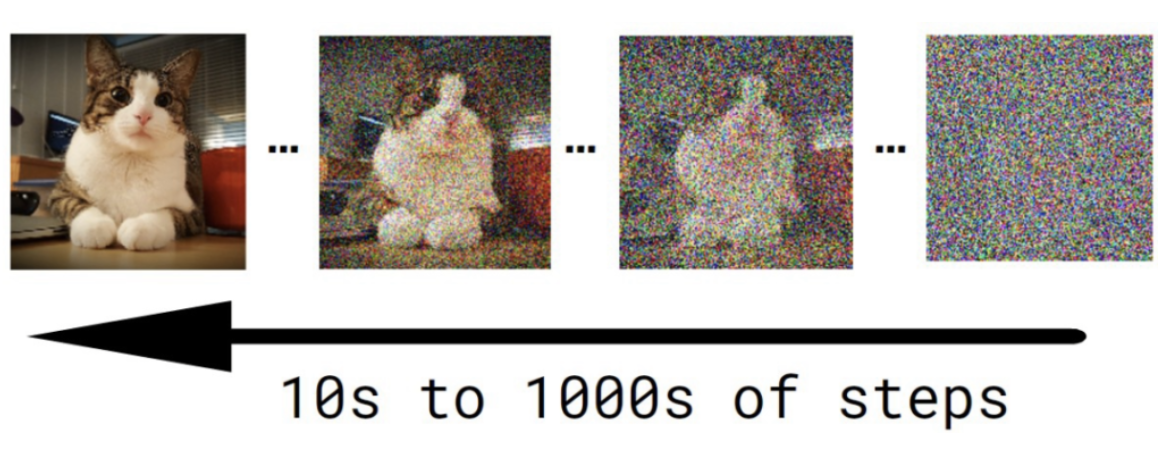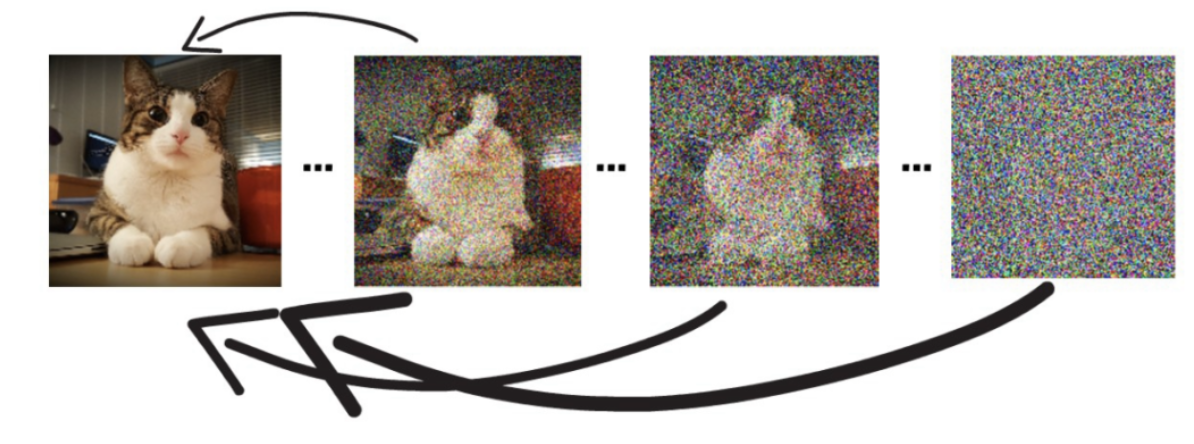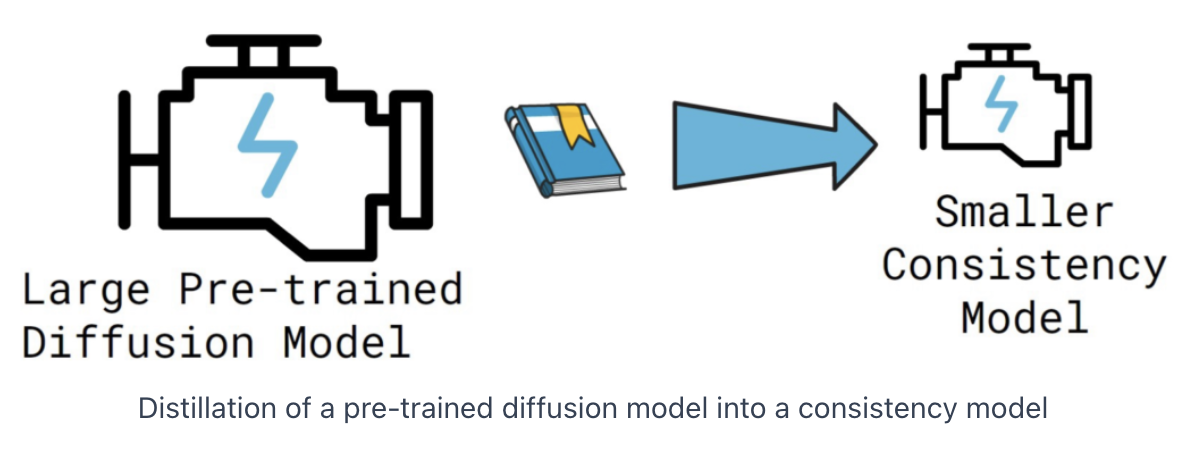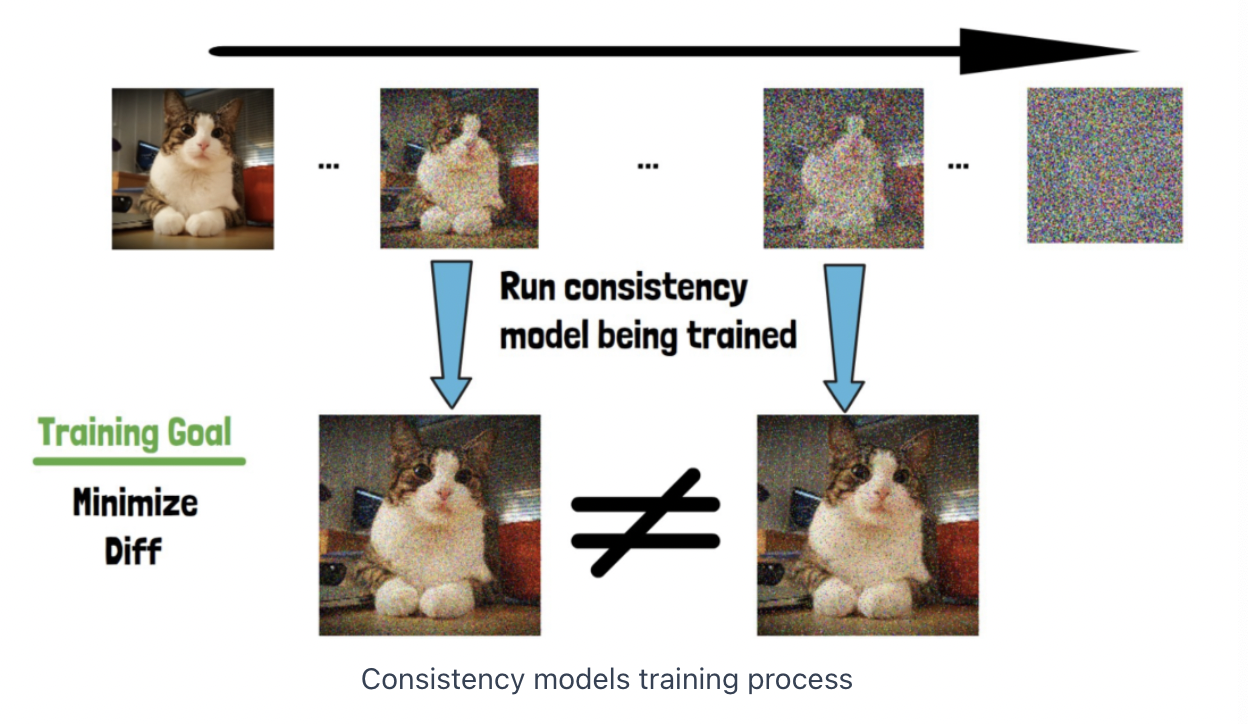Consistency Models – Optimizing Diffusion Models Inference
Song, Yang, et al. "Consistency models." arXiv preprint arXiv:2303.01469 (2023).
참고:
- https://aipapersacademy.com/consistency-models/
- https://arxiv.org/pdf/2303.01469
Contents
- Introduction
- Consistency Models
- Methods of Creating Consistency Models
- Training Process
1. Introduction
Consistency models ( by OpenAI )
- New type of generative models
Background: Diffusion models
-
Backbone for dominant **image generation models **
- (e.g., DALL-E 2, Imagen and Stable Diffusion)
-
Drawbacks: # of inference steps
\(\rightarrow\) Can be tooo slow!

2. Consistency Models
Consistency models learn to remove all of the noise in one iteration

Consistency Models ( vs. Diffusion models )
Similar) Also learn to remove noise from an image
Difference) Dramatically reduce the number of steps
- How? Teach the model to map between any image on the same denoisening path to the clear image
(Term) Consistency
The model learns to be
- “consistent” for producing the “same” clear image
- for any point on the same path!
\(\rightarrow\) Able to jump directly from a completely noisy image to a clear image
( + Flexibility: If higher quality image is needed, pay off with more compute! )
3. Methods of Creating Consistency Models

2 ways to train a consistency model
- (1) Distillation of a pre-trained diffusion model.
- (From) Large pre-trained diffusion model (e.g., Stable Diffusion (SD))
- (To) Smaller consistency model
- (2) From Scratch
- Able to produce good with trained-from-scratch models as well!
4. Training Process

Look at “pairs of points”
Feed the consistency model with each of the images from that pair to restore the original image
\(\rightarrow\) Make these two results similar! (Minimize the difference)
